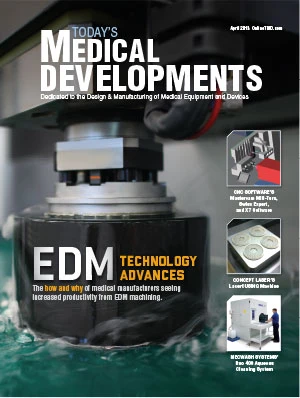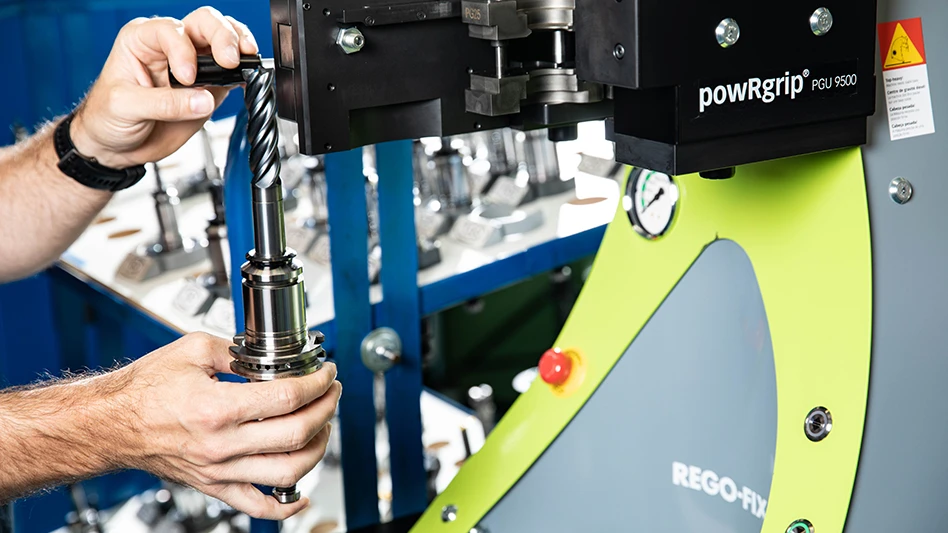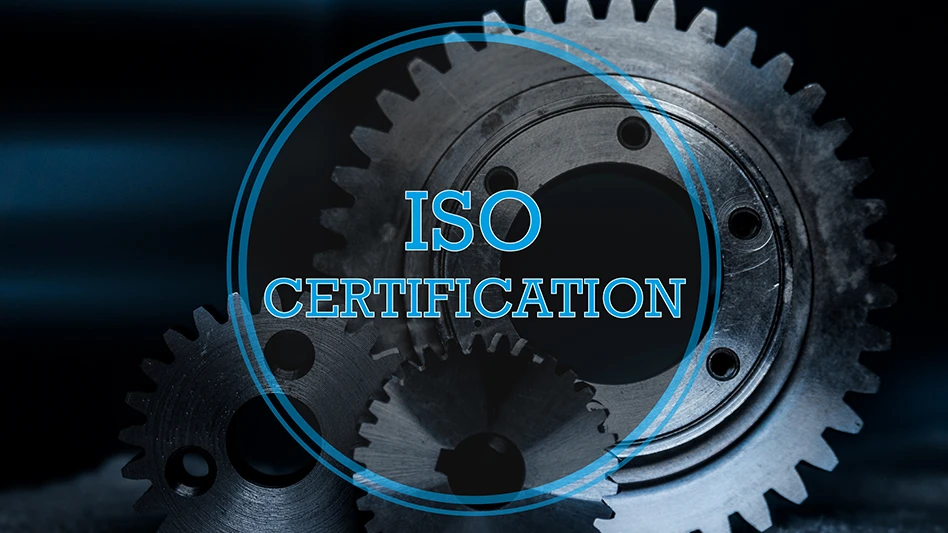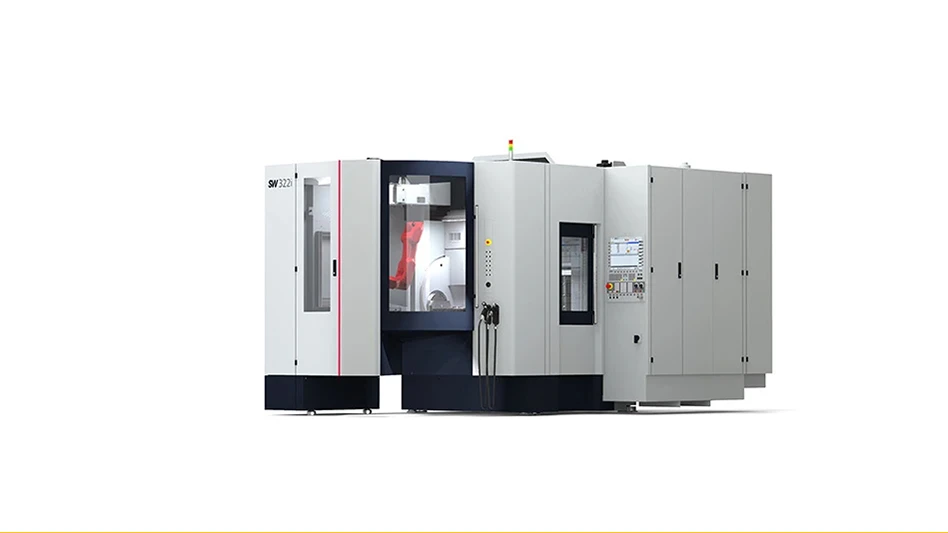Advising on Strategic Alliance
Viant Capital LLC acted as the exclusive financial advisor to Arcam AB regarding its strategic alliance with DiSanto Technology Inc.
The strategic alliance combines Arcam’s leading Additive Manufacturing EBM technology with DTI’s full-service product application development and contract manufacturing. As part of the strategic alliance agreement, Arcam will provide capital to and arrange financing for DTI to support its EBM-based manufacturing capability, including DTI’s initial purchase of two EBM systems. The securities underlying the financing provide for potential minority cross-ownership positions in each other. Furthermore, as part of the strategic alliance, Arcam has an option to acquire DTI in its entirety any time during the first two years of the strategic alliance. www.viantgroup.com
 Coating Spinal Polymer Implants
Coating Spinal Polymer Implants
Researchers from North Carolina State University have successfully coated polymer implants with a bioactive film. This discovery should improve the success rate of implants – which are often used in spinal surgeries.
The polymer used in these implants, PEEK, does not bond well with bone or other tissues in the body. This can result in the implant rubbing against surrounding tissues, which can lead to medical complications and the need for additional surgeries.
The first step in the new technique coats the implant with a thin film of yttria-stabilized zirconia (YSZ). The second step applies a coating of hydroxyapatite, which is a calcium phosphate that bonds well with bone. The researchers then heat the hydroxyapatite layer using microwaves. The YSZ layer acts as a heat shield, preventing the PEEK from melting. Meanwhile, the heat gives the hydroxyapatite a crystalline structure that makes it more stable in the body, meaning that the calcium phosphate will dissolve more slowly – promoting bonding with surrounding bone. www.ncsu.edu
 Exoskeleton Device Named Indego
Exoskeleton Device Named Indego
A new exoskeleton device from Parker Hannifin will enter the market carrying the moniker Indego. Parker officials recently announced an exclusive licensing agreement with Vanderbilt University for its exoskeleton technology, which allows individuals with severe spinal cord injuries to walk and enhances rehabilitation for people who have suffered a stroke. The agreement gives Parker exclusive rights to develop, manufacture, and sell the device, subsequent to the appropriate regulatory clearances. Parker intends to invest in further development of the technology and establish a business unit targeting commercial launch of the exoskeleton device in 2014.
“We believe the name Indego captures the essence of the device, highlighting the primary benefit of enhanced independence,” states Craig Maxwell, vice president of technology and innovation, Parker. “The design objective of the team has always been to provide a solution that functions as a natural extension of the user. Indego’s compact, lightweight, and intuitive design creates a seamless interface between man and machine. These features will become increasingly important as we extend availability of the device beyond the clinical setting and into the personal mobility space.”
Indego weighs just 27 lb, which is nearly 50% lighter than other exoskeletons. The device also has a slim profile and no footplates or bulky backpack components, enabling users to wear the device even while sitting in a wheelchair. Its modular design allows users the ability to quickly assemble and disassemble the device for ease of use and transportation.
Two additional advantages from a rehabilitative perspective: The amount of robotic assistance adjusts automatically for users who have some muscle control in their legs, and it is the only wearable exoskeleton incorporating functional electrical stimulation, a proven rehabilitation technology.
The Indego exoskeleton device is currently being tested and refined through clinical research at the Shepherd Center in Atlanta, Ga.
FDA 510(k) Clearance for Edge and Vitesse
Varian Medical Systems received FDA 510(k) clearance for its Edge radiosurgery suite and Vitesse Brachytherapy Treatment Planning Software.
 Edge radiosurgery suite is a new dedicated system for performing advanced radiosurgery using innovative real-time tumor tracking and motion management technologies.
Edge radiosurgery suite is a new dedicated system for performing advanced radiosurgery using innovative real-time tumor tracking and motion management technologies.
Recent FDA 510(k) clearances cover the following technologies integrated into the Edge radiosurgery suite, which will also be available as upgrades to other compatible Varian systems:
- PerfectPitch couch
- Advanced Motion & Image-Guided Radiotherapy (IGRT) package
- Intracranial radiosurgery package
- Calypso system
The other FDA 510(k) cleared product, Vitesse real time planning for HDR brachytherapy, helps plan and perform high-dose-rate (HDR), ultrasound-guided brachytherapy treatments.
HDR brachytherapy involves delivering radiotherapy from inside the body by temporarily placing a tiny radioactive source directly into the tumor or other targeted area. Using a robotic device called an afterloader, clinicians place the radioactive source into positions through needles inserted into the area requiring treatment. The source is then moved within the needles under computer control to create the specified dose distribution within the patient’s anatomy.
Use of the latest version of Vitesse, HDR brachytherapy treatment means plans can be created in a real-time environment, using ultrasound images generated in the operating room rather than CT scans generated elsewhere. This avoids the need to move the patient to a CT scanner room for imaging after placing the needles. The process, completed entirely within the Vitesse program, captures the ultrasound image and integrates through the finalization of an approved treatment plan.
In addition to receiving FDA 510(k) clearance, Varian has also obtained the CE Mark. www.varian.com
 CE Mark for Scoliosis Treatment
CE Mark for Scoliosis Treatment
Officials from ApiFix Ltd. announce receipt of the CE Mark for a minimally invasive treatment system for Adolescent Idiopathic Scoliosis (AIS). Today’s gold standard for correction AIS involves permanent spinal fusion of an average of 10 motion levels, using a large number of screws, in a surgical procedure that lasts around six hours and costs upward of $100,000. The CE-Approved ApiFix AIS correction system minimizes risk, pain, and scarring for the patient, speeds recovery time, is a shorter and simpler procedure, and costs less.
In the ApiFix system, a small implant is attached to the center of the main spinal curvature using only two screws, leaving a 10cm scar compared to more than a 40cm scar in the standard procedure. After recovering from surgery, which takes only about an hour, the patient undergoes physical therapy treatments, during which the implant gradually educates the spine into a correct position, remembering and reinforcing each correction made. www.apifix.com
DEHP-Free
Manufacturers of temporary adherent medical devices who are concerned about potential DEHP requirements can now utilize Vancive Medical Technologies’ DEHP-free products, including InteliShield Barrier Film.
“With the introduction of DEHP-free Vancive Medical Technologies InteliShield barrier film for ostomy applications, we are anticipating a growing demand for plasticizer-free medical devices,” states Barbara Van Rymenam, global segment market manager, Vancive Medical Technologies (formerly Avery Dennison Medical Solutions). “That need gained even greater urgency when fresh concerns arose in the European Union over use of the plasticizer DEHP in medical products.”

Explore the April 2013 Issue
Check out more from this issue and find your next story to read.
Latest from Today's Medical Developments
- Tariffs threaten small business growth, increase costs across industries
- Feed your brain on your lunch break at our upcoming Lunch + Learn!
- Robotics action plan for Europe
- Maximize your First Article Inspection efficiency and accuracy
- UPM Additive rebrands to UPM Advanced
- Master Bond’s LED415DC90Med dual-curable adhesive
- Minalex celebrates 60 years of excellence in miniature aluminum extrusions
- Tormach’s Chip Conveyor Kit for the 1500MX CNC Mill





